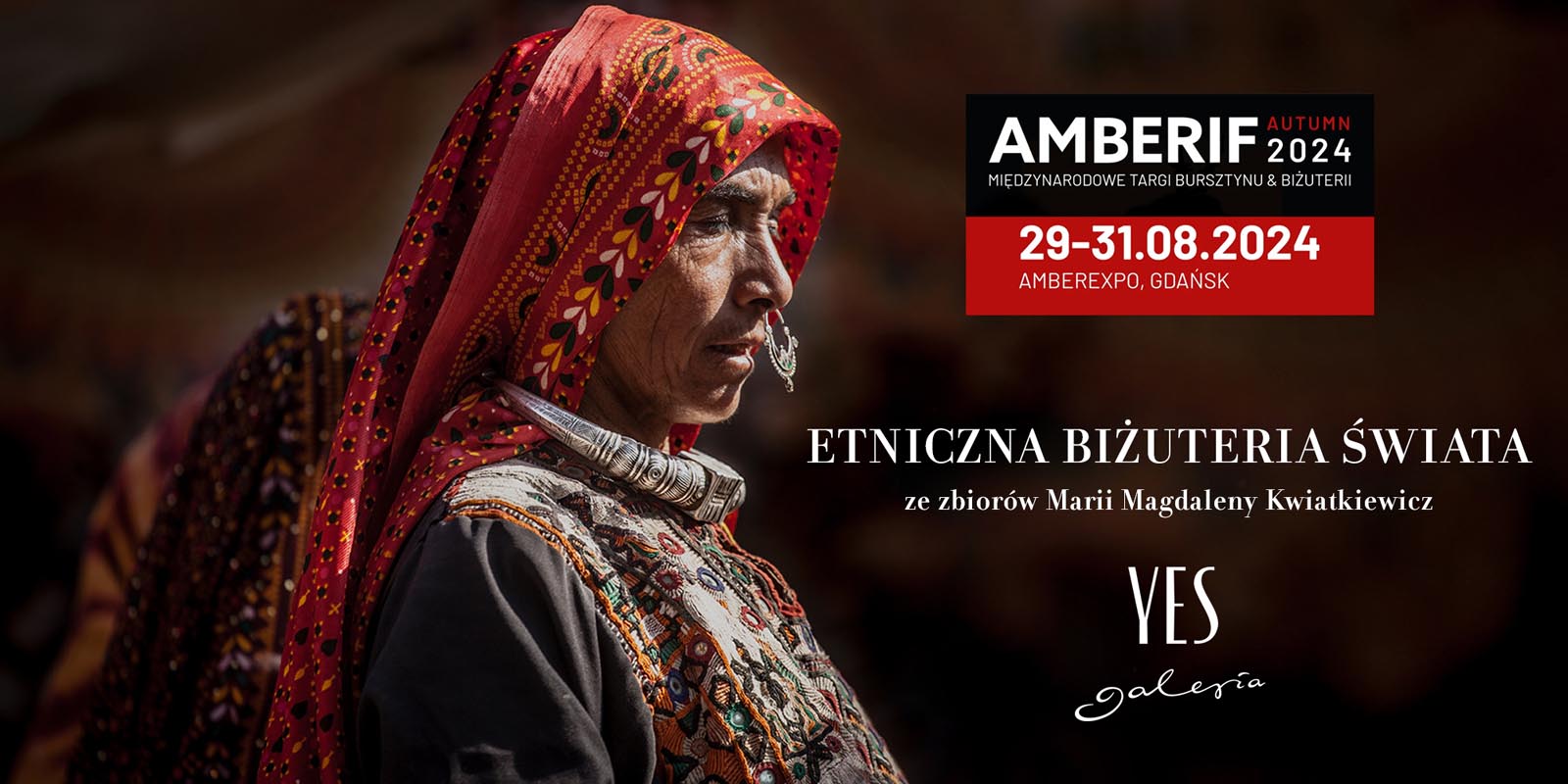
The immediate context of jewelry is the body. And even if we are talking about magical, talismanic or religious ethnic jewelry, by whom and for what purpose it is worn plays a huge role. In a unique exhibition that takes us to the farthest corners of the world, we will present an extremely colorful and exotic picture of ethnic jewelry from the collection of Maria Magdalena Kwiatkiewicz.
The main reason he travels are people - their everyday life, work, culture and religion, which is inextricably linked with them. Maria Magdalena Kwiatkiewicz, a traveler, collector, and finally a business woman, invites you to an expedition guided by jewelry and people who give it special, often magical meaning.
India, Nepal, Papua, Cambodia, Ethiopia, China, Tibet - among others. collections of ethnic jewelry come from these countries and, at the invitation of the organizers of the autumn edition of the Amberif Fair, will be hosted in Gdańsk. The exhibition will be complemented by photographs taken by Maria Magdalena Kwiatkiewicz during her journey. All the presented objects, almost 90 of them, constitute an important code for a given tribe, a non-verbal message informing about their origin, religion and position in the environment.
Such importance includes, among others: African necklaces commonly called passports through the desert. Tuareg crosses are made of string and metal, which bring the identity and origin of the person wearing them closer to the people living in the Sahara. Thanks to the special shape of the pendant and the engravings on it, it is possible to read what area the traveler comes from. Each oasis has a different, characteristic cross shape, informing about such elements of the surrounding landscape as the surrounding hills and even the number of wells. The person wearing it is not anonymous to the inhabitants of the Sahara, and is therefore more willing to be given shelter.
It has a different, but equally important meaning, among others: a large, silver clip with carefully embossed Buddhist symbols, characteristic of the Tibetan culture. It is worn as an element of clothing and is used to hold clothes - specifically wide, colorful belts worn by local women around the waist. How did Maria Magdalena Kwiatkiewicz come into possession of this object? While traveling through the Tibetan Plateau, she met a woman herding yaks, wearing just such a decorative clasp. She did not part with it - the family's greatest asset - not even for a moment. According to tradition, she was supposed to give the pin to her daughter only on her wedding day. The traveler bought it from the owner, thanks to which the woman could use the money to have new fasteners made for all her descendants.
The exhibition opening will take place on the first day of the Fair on Thursday, August 29, 2024 at 4:00 p.m. in the Art Zone – HALL B – Amberif fair.
During the exhibition, the YES gallery will conduct curatorial tours twice a day at 12:00 and 16:00, on Saturday, August 31, 2024 at 11:00 and 14:00. On August 29, 2024, there will also be an opportunity to talk in person with the author Maria Magdalena Kwiatkiewicz.
Admission to the exhibition is free for all guests of the AMBERIF Fair.
Her two great passions - traveling and photography, become stronger every year. Wandering to the farthest corners of the world with a camera in her hand, she sets out to meet people because they are the most important to her - both in her personal and professional life. She is fascinated by the so-called ordinary people whose uniqueness is remembered thanks to photographs and emotions. Landscapes and exotic landscapes delight, but they are only a background for what is most important - relationships established, customs learned and everyday challenges encountered at the edge of the world of families. It is people in the context of their immediate surroundings that are at the center of attention in his photographic series, of which he has already produced several dozen and which he has been sharing with great pleasure with cultural and art institutions for over ten years, preferably organizing exhibitions in the urban tissue - on the streets. She cares about the widest access to knowledge and the element of goodness that she tries to bring from each expedition.
Maria Magdalena Kwiatkiewicz, co-founder of YES Biżuteria, is not only an example of an extremely empathetic traveler, but also a huge lover and, at the same time, an experienced expert of Polish design, which she has been introducing to the market for 40 years. Currently, she is the owner of the largest private collection of contemporary and ethnic jewelry brought from expeditions in Poland, with over 1,600 objects. He also fulfills the internal need to promote Polish goldsmithing art through the YES Gallery, established 24 years ago, located in the Old Town of Poznań. – My world has always been filled with jewelry, both in the context of my professional life and my great passion for beauty and design. I love ethnic jewelry, which I bring from the farthest corners of the world and with which I enrich my collection, and it makes me especially happy, says Maria Magdalena Kwiatkiewicz. – I feel even greater satisfaction when collecting contemporary jewelry, especially the unique ones, which often set new directions in design and goldsmithing in general – he adds.
The last work of Maria Magdalena Kwiatkiewicz is the book "Artyści goldsmiths, Conversations about Polish jewelry".